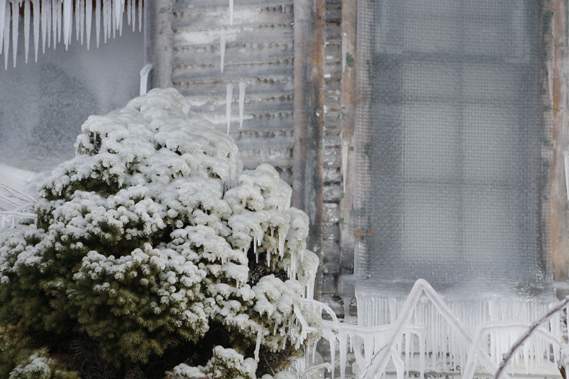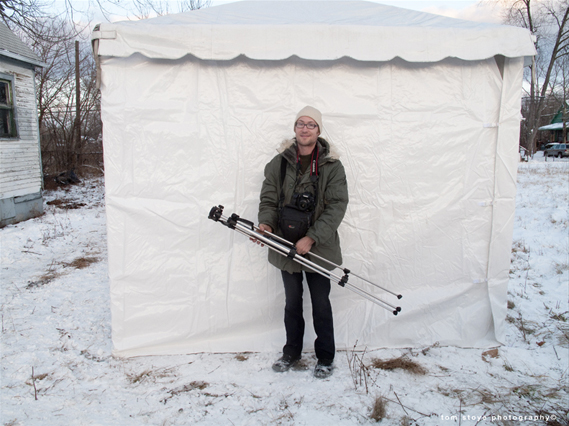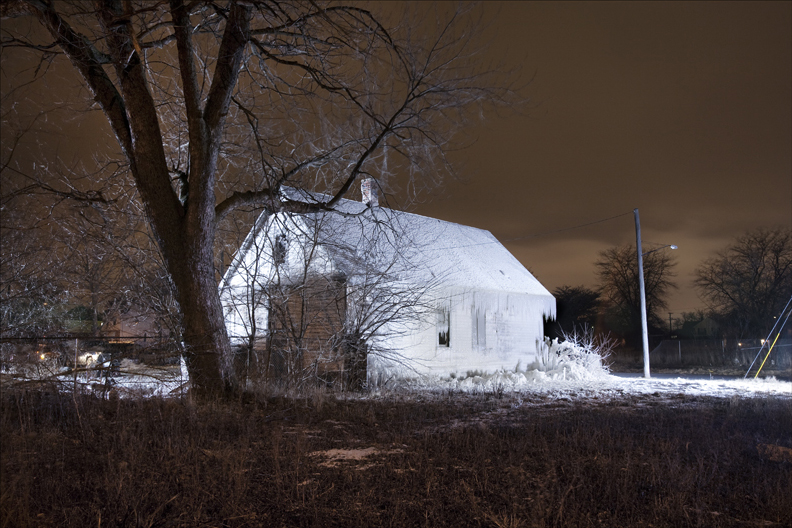
In a project that was as much about raising money and promoting social change as it was about creating a stunning architectural installation, Ice House Detroit saw one of the city's 20,000+ abandoned houses clad completely in ice by Detroit photographer Gregory Holm and architect Matthew Radune...
From start to finish the entire project was documented on dedicated blog – icehousedetroit.blogspot.com – and photographer Holm has kindly supplied us with a stunning high res shot of the ice-covered house for inclusion in the May issue of CR (which comes out later this week). He also sent us a selection of images taken during the creation of the project and told us a little of the thought processes and the methodologies of his approach:
"Returning home to Detroit, there were several considerations to keep in mind – given the vulnerable state of the city being constantly pillaged for its aesthetic refuse, and the public perception of Brooklyn-based artists coming in and still calling Detroit home," explains Holm. "It was very important to initially touch base with the community and assure them that this was not just as an art project. This was going to be as much about giving back to the city in an exchange for using the landscape as it was creating a beacon for dialogue in a neglected neighborhood. Through that commitment we were able to feed several hundred homeless people, and subsidize the purchase of a home for a Detroit family."


"The actual application of water to the structure lasted just over a month," continues Holm. "From the onset I had decided on the more time consuming method of applying water, using only a fine mist. Although due to a very sunny January the attempt at controlling the appearance that our house would take on was met with very modest success. Instead the ongoing process of taking three steps forward and two steps back led to the humbling epiphany that this was a collaboration with the forces of nature. Matthew and myself each did our part by working two shifts of 12 hours a day for the month of January and into February but even so, we did have to extend our finish date."








One of the many collaborators that Holm and Radune worked with to make the Ice House Detroit project happen, was photographer Tom Stoye - who took dozens of shots of the people working on the installation and of the locals who stopped by to say hi and support the project. Here are a few of his shots, including one of photographer Holm:

And one of Radune too:

And some great portait shots of members of the Detroit neighbourhood community where the project took place:






"The question of whether this installation was an art project or a social project is one that I find somewhat redundant, and a difficult concept for gallerists to accept," says Holm. "As always, it is the artist's responsibility to redefine their role in society and reinvent the plateau by which they create. For many photographers the craft of intuitively understanding light has fallen by the wayside with the advancement of LCD cameras. While it may be obvious to see how technology can spur the dilution of film and the photographic image in general, it can be looked at as a time of great opportunity in photography where the stakes are now higher, and certain fields of understanding are now able to be enhanced with a greater socioaesthetic significance."
To find out more about the project and see more images, visit icehousedetroit.blogspot





















